This article was medically reviewed by Alina Lane, DDS and by wikiHow staff writer, Jessica Gibson. Dr. Alina Lane is a Dentist who runs All Smiles Dentistry, a general practice dental office based in New York City. After completing a DDS at the University of Maryland, Dr. Lane completed a year-long clerkship in Implantology at the University of Maryland, where she focused on the advanced restoration of dental implants. She continued her advanced education by completing a General Practice Residency at Woodhull Medical Center, an affiliate of the NYU School of Medicine. She received the Woodhull Medical Center Resident of the Year 2012-2013.
There are 14 references cited in this article, which can be found at the bottom of the page.
This article has been viewed 63,247 times.
It's easy to think of teeth as simply being bones, but they're more than that. Your teeth are made of multi-layered hardened tissue and are buried in your gums. Enamel and dentin are made up of minerals that protect the inside of your teeth (the pulp). This inner part of the teeth contains sensitive nerves and blood supply. Unfortunately, bacteria can damage the protective coverings (through a process called demineralization). Demineralization can lead to infection, inflammation and cavities. Your dentist may recommend a root canal to clean the area and relieve the pain.
Things You Should Know
- Your tooth might be a little tender or sensitive, but it is usually atypical for the tooth to actively hurt after a root canal and you should contact the dentist or endodontist if it hurts.
- Hold an ice pack against your cheek where the tooth is bothering you to sooth any irritation that you’re experiencing.
- If your dentist didn’t prescribe you anything for the pain, feel free to take some ibuprofen or acetaminophen to take the edge off.
- If your tooth starts to ache, mix ½ teaspoon (5.6 g) of sea salt with 4 ounces (118 mL) of warm water and swish it around in your mouth for 30 seconds before spitting it out.
- If you’re struggling to sleep at night because your mouth feels funny, prop your head up with some extra pillows; the elevation should keep your gums and nerves from throbbing.
Steps
Treating Pain at Home
-
1Take pain medication. Your dentist may prescribe a pain reliever for you to take after the root canal. If not, or if the pain is only minimal, take an over-the-counter pain reliever like ibuprofen or acetaminophen according to the manufacturer's instructions.[1]
- Although you'll be given pain medication during the root canal, you should take the OTC pain relievers within an hour after the root canal. This will give them a chance to start working before your anesthesia wears off.[2]
-
2Use ice to relieve pain. Ice can temporarily numb the pain from your tooth. Place an ice cube or crushed ice on the tooth (as long as it's not sensitive to cold). Keep it there until you no longer feel pain or the ice melts. Or, place an ice pack over the side of your face for 10 minutes to help minimize any swelling.
- Never apply an ice pack directly to your skin. Make sure it is wrapped in a cloth, like a towel or a t-shirt, to prevent frostbite.
- You can also make a compress to set over the tooth. Crush ice and put it in a balloon or in the cut-off finger of a non-latex glove. Tie off the end and set the compress over the tooth.
Advertisement -
3Use a saltwater solution.[3] Relieve toothache by dissolving 1/2 teaspoon of sea salt in 4 ounces (118 mL) of warm water. Place some of this solution in your mouth and hold it over the painful tooth for 30 seconds to one minute. Spit out the solution and repeat this two to three times. Rinse out your mouth with warm water. You can do this up to three or four times a day, just don't swallow the saltwater.
- You can also use a vinegar solution. Mix ¼ cup of warm water and apple cider vinegar and keep it in your mouth over the painful tooth, just like the saltwater solution.
- Try to avoid any alcohol consumption or even holding alcohol in your mouth, as it will produce dehydration of your mucosa and gums.
-
4Bite down on a fruit or vegetable. Chill a slice of fresh ginger, cucumber, or raw potato and place it over your painful tooth. Or, you can freeze slices of banana, apple, mango, guava or pineapple and place the slices on your aching tooth. The cool fruit or vegetables can numb the pain.
- You can also try cutting a piece of onion or garlic to place directly over your tooth. Bite down gently to release the juice. Just remember to use a breath mint after this home remedy.
- Eating ice cream may also reduce pain, especially if you feel a pulsating pain.
-
5Make a tea compress. Take an herbal tea sachet or dip a clean cotton cloth in warm herbal tea.[4] Set the cloth or sachet over your painful tooth and leave it there for five minutes. Do this two or three times a day. Use one of these teas:
-
6Apply an asafetida paste. Take ¼ teaspoon of asafetida powder and mix it with enough fresh lemon juice to make a paste. Apply this directly onto the tooth. The lemon juice will help hide the bitter taste and unpleasant odor. Leave the paste on for five minutes before rinsing out your mouth. Repeat this two to three times a day.
- Asafetida is a fennel-like plant that's usually used as a cooking spice in Indian foods. It comes as a powdered resin or as a lump of resin and can be found in Indian stores and markets.
-
7Use a heat pack. Some people find that moist heat can help relieve pain the day after your root canal. You can place either a small piece of cloth soaked in warm water or use a cloth soaked in an herbal tea directly on the tooth. Leave it on until the cloth is no longer warm. Repeat this three or four times a day.
- You can also try baby teething gels. These contain a local anesthetic that may relieve the pain. Keep in mind that these gels aren't antimicrobial and won’t treat any infection.
-
8Know when to contact your dentist. If you've tried several of these treatments, but find that you feel severe pain even a few days after your root canal, call your dentist. You should also get in touch with your dentist if you notice pressure that lasts several days following your root canal.[8]
- Your dentist can prescribe pain relief medication if over-the-counter medications aren't reducing your pain.
Practicing Good Dental Hygiene
-
1Brush your teeth correctly. Brush your teeth and gums at least twice a day.[9] Once you've brushed the teeth using a toothpaste, spit out the foam but don't rinse your mouth. This gives your teeth a chance to absorb the minerals from the toothpaste. Don't forget to brush your tongue too.[10]
- Use a soft toothbrush since you can damage your teeth by brushing with hard bristles or by scrubbing too hard.
-
2Floss every day.[11] Unwind about 18 inches (46 cm) of floss, winding most of it around the middle finger of one hand. Wind the rest around the middle finger of your other hand. Hold the floss firmly between your thumb and your forefinger. Gently guide the floss between all of your teeth using a gently back and forth motion, curving the floss around the bottom of each tooth.[12]
- Try to floss as deep as possible under your gum to remove any food particles or remaining bacteria.
- Don't forget to gently rub up and down the sides of each tooth once the floss is between the teeth.
- An oral irrigator may be helpful to remove debris that you miss when flossing.
-
3Massage your gums or erupting teeth. Use a clean finger and gently rub gums or the top of the tooth that's breaking through the gums. Be gentle and massage your gums three or four times a day. You can also massage your gums with an anti-inflammatory and antimicrobial oil that can reduce swelling and relieve pain. Try using a few drops of:
-
4See your dentist. You should visit your dentist and have your teeth professionally cleaned at least once a year.[17] Get more frequent cleanings if you smoke, have heart disease, or have diabetes since these are linked to dental health.[18]
- If you notice pain, bad breath, difficulty swallowing, jaw, gum or mouth swelling or fever, call your dentist right away.
-
5Replace your toothbrush. If your toothbrush bristles are fraying, it's time to replace the brush before it starts damaging your teeth. Dentists recommend replacing your toothbrush at least once every three or four months (sooner if the bristles become frayed).[19]
- Store your toothbrush in a clean open place. Avoid using closed containers since this can cause bacteria to grow on the brush.
Understanding a Root Canal
-
1Recognize the risk factors. Sometimes the nerve in your tooth might just die. Or, you have a cracked or chipped tooth that leads to tooth decay in the tissue within your tooth. These may be caused by an injury to the tooth. When your tooth is injured, inflamed, or suffers nerve death, your tooth will struggle to heal itself.
- If you've had a root canal before that didn't completely clean the tissue or if you didn't get a permanent filling over the root canal, you may need another procedure.
-
2Consider your symptoms. If you're experiencing pain, sensitivity to either hot or cold (sometimes both), tenderness, swelling, or discoloration of the tooth, talk with your dentist. These may be caused by inflamed tissue or infection within your tooth.[20] They may also be caused by a neighboring tooth and not the tooth you suspect is causing the issue. Don’t wait more than a week to talk to your dentist.
- Some people don't have any symptoms of inflammation or infection, but still need root canals.
-
3Know what to expect during a root canal. A dental specialist (endodontist) will clean out the inflamed or infected part of your tooth's root. A filling made of a rubbery material (gutta-percha) or a crown restores your tooth. You'll be given a local anesthetic during the root canal, so the procedure shouldn't be painful.[21]
- Your tooth may feel strange or sensitive following the root canal. If you have severe pain or pressure, call your dentist.
Expert Q&A
-
QuestionHow can I help my gums heal after a tooth extraction?
 Joseph Whitehouse, MA, DDSDr. Joseph Whitehouse is a board certified Dentist and the Former President of the World Congress on Minimally Invasive Dentistry (WCMID). Based in Castro Valley, California, Dr. Whitehouse has over 46 years of dental experience and counseling experience. He has held fellowships with the International Congress of Oral Implantology and with the WCMID. Published over 20 times in medical journals, Dr. Whitehouse's research is focused on mitigating fear and apprehension patients associate with dental care. Dr. Whitehouse earned a DDS from the University of Iowa in 1970. He also earned an MA in Counseling Psychology from California State University Hayward in 1988.
Joseph Whitehouse, MA, DDSDr. Joseph Whitehouse is a board certified Dentist and the Former President of the World Congress on Minimally Invasive Dentistry (WCMID). Based in Castro Valley, California, Dr. Whitehouse has over 46 years of dental experience and counseling experience. He has held fellowships with the International Congress of Oral Implantology and with the WCMID. Published over 20 times in medical journals, Dr. Whitehouse's research is focused on mitigating fear and apprehension patients associate with dental care. Dr. Whitehouse earned a DDS from the University of Iowa in 1970. He also earned an MA in Counseling Psychology from California State University Hayward in 1988.
Board Certified Dentist Your dentist will give you specific instructions based on your personal history, but for most people, you'll have to keep a piece of gauze in your mouth for 20 minutes. Then, you remove the gauze and replace it with a fresh piece. After 20 minutes, replace the gauze again if the second piece was bloody. Continue doing this until the bleeding stops.
Your dentist will give you specific instructions based on your personal history, but for most people, you'll have to keep a piece of gauze in your mouth for 20 minutes. Then, you remove the gauze and replace it with a fresh piece. After 20 minutes, replace the gauze again if the second piece was bloody. Continue doing this until the bleeding stops.
References
- ↑ Alina Lane, DDS. Board Certified Dentist. Expert Interview. 21 April 2020.
- ↑ https://www.nhs.uk/conditions/root-canal-treatment/
- ↑ Alina Lane, DDS. Board Certified Dentist. Expert Interview. 21 April 2020.
- ↑ http://www.huffingtonpost.com/2011/09/25/homemade-compresses_n_980207.html
- ↑ http://www.ncbi.nlm.nih.gov/pmc/articles/PMC4441164/
- ↑ http://www.motherearthnews.com/natural-health/home-remedies-for-toothaches-gingivitis-zbcz1412.aspx
- ↑ http://www.ncbi.nlm.nih.gov/pubmed/14744744
- ↑ http://www.aae.org/patients/frequently-asked-questions.aspx
- ↑ Alina Lane, DDS. Board Certified Dentist. Expert Interview. 21 April 2020.
- ↑ http://www.mayoclinic.org/healthy-lifestyle/adult-health/in-depth/dental/art-20045536
- ↑ Alina Lane, DDS. Board Certified Dentist. Expert Interview. 21 April 2020.
- ↑ Joseph Whitehouse, MA, DDS. Board Certified Dentist. Expert Interview. 9 April 2020.
- ↑ http://www.ncbi.nlm.nih.gov/pmc/articles/PMC4054083/
- ↑ http://www.ncbi.nlm.nih.gov/pubmed/16530911
- ↑ http://www.ncbi.nlm.nih.gov/pmc/articles/PMC4054083/
- ↑ http://www.ncbi.nlm.nih.gov/pubmed/22783715
- ↑ Alina Lane, DDS. Board Certified Dentist. Expert Interview. 21 April 2020.
- ↑ https://www.humana.com/learning-center/health-and-wellbeing/healthy-living/teeth-cleaning
- ↑ http://www.mayoclinic.org/healthy-lifestyle/adult-health/in-depth/dental/art-20045536
- ↑ http://www.aae.org/patients/treatments-and-procedures/root-canals/root-canals-explained.aspx
- ↑ http://www.aae.org/patients/treatments-and-procedures/root-canals/root-canals-explained.aspx
About This Article
If you’ve had a root canal procedure and your gums still hurt, there are a few home remedies you can try to reduce your pain. Hold an ice cube on your painful tooth until the pain goes away or the ice melts. Alternatively, hold an ice pack over the side of your face for 10 minutes to reduce the swelling and numb the area. You can also use saltwater to relieve your pain. Just mix ½ teaspoon of salt with 4 ounces of warm water, hold the mixture in your mouth for 1 minute, then spit it out. You can repeat this 3 or 4 times a day if you need to. If your pain is still bad a few days after your root canal and nothing helps, call your dentist for advice. For more tips from our Dental co-author, including how to keep your teeth and gums clean, read on!
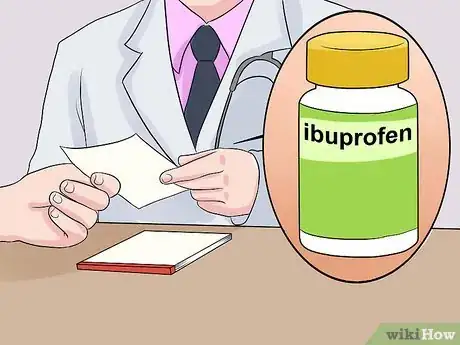

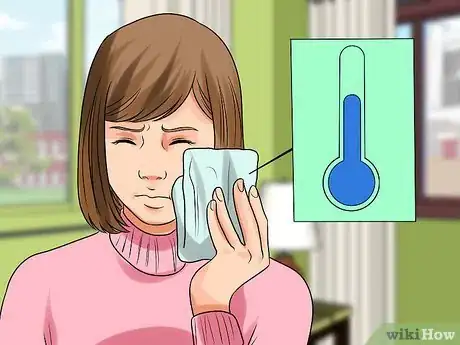
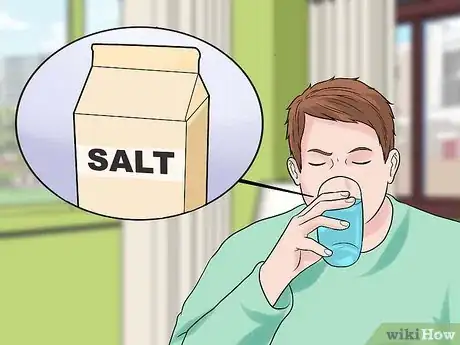

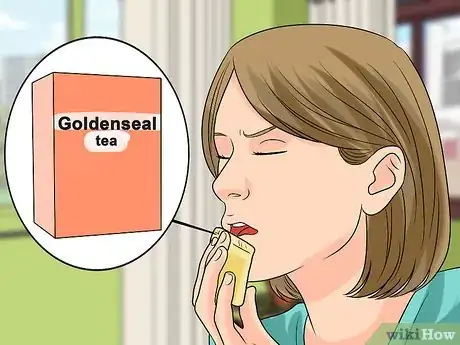
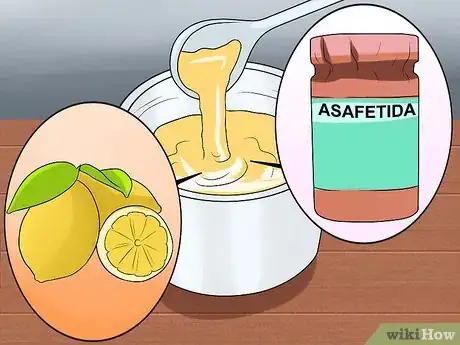
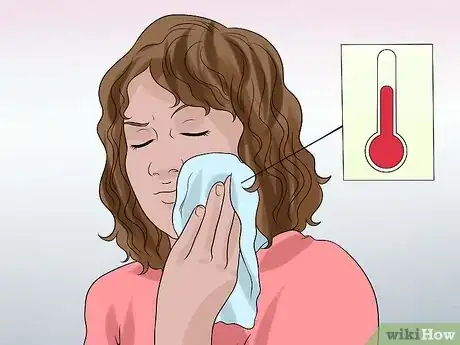


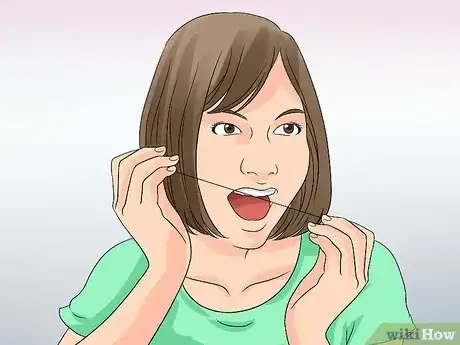



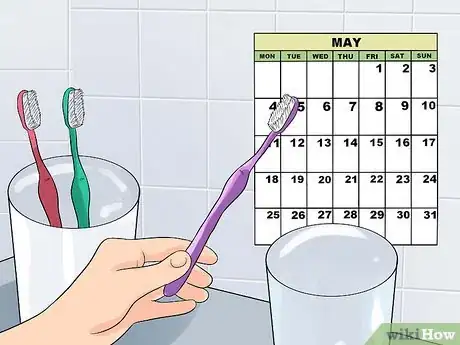


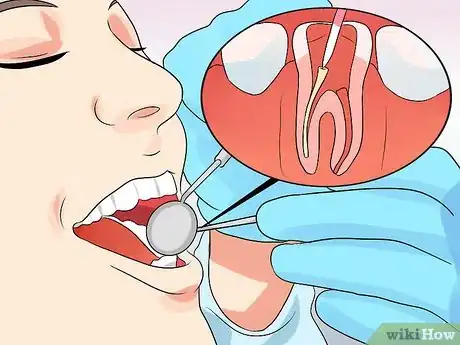


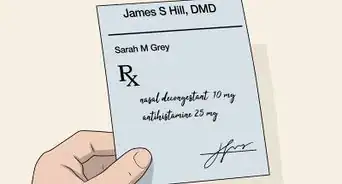


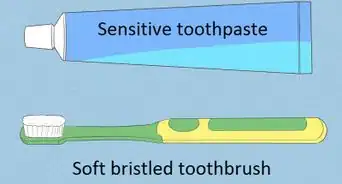
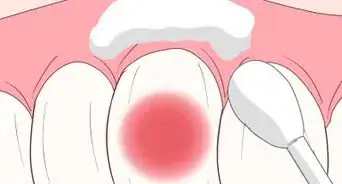



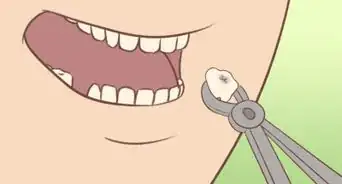

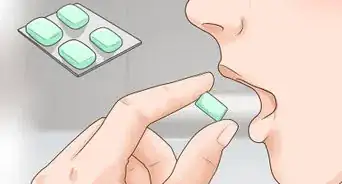







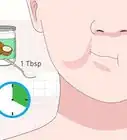
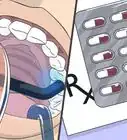
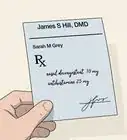




































Medical Disclaimer
The content of this article is not intended to be a substitute for professional medical advice, examination, diagnosis, or treatment. You should always contact your doctor or other qualified healthcare professional before starting, changing, or stopping any kind of health treatment.
Read More...